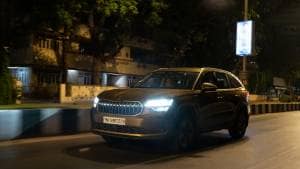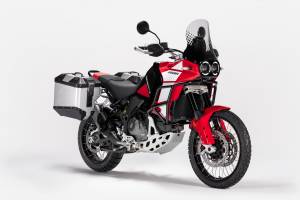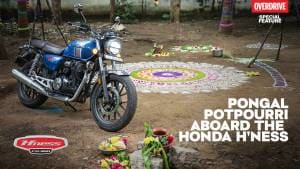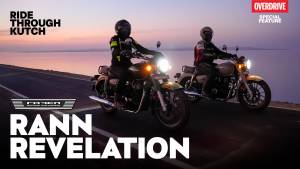Ducati Desert X first ride review
Ducati doesn't usually build concept vehicles, but at the 2019 EICMA motorcycle show, they imagined a modern-retro adventure motorcycle based on the rally bikes of the 80s and 90s - something like the Cagiva Elephant or the old Africa Twin - replete with two round headlights, a big tank and an upright stance. The concept was received rather well and so they decided to build it, and despite the pandemic hitting us in 2020, the Ducati technicians were hard at work to deliver the production bike in less than three years.
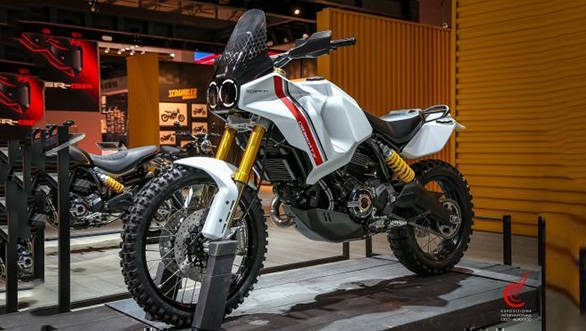 Ducati Scrambler Desert X Concept
Ducati Scrambler Desert X Concept
Design
As you would expect, it doesn't look very different from the concept. They haven't even added any colour options and honestly, I'm not sure if this Ducati would look as great in red. The matte white works well for its off-road intent and the slab sides provide a good canvas for those wanting to put a custom livery on the motorcycle. From the imagery, it may look large and intimidating and it even dwarfs the Africa Twin (not the Adventure Sports variant), but get astride the Desert X and it feels compact and ready to hit the rough stuff, irrespective of decorated a rider you are.
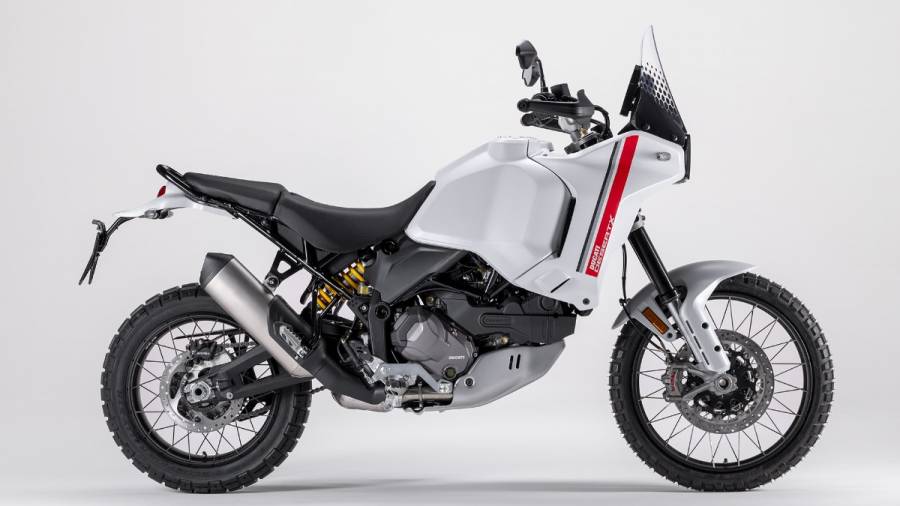
The tall seating of 875mm is worrisome for those shorter than 5ft5" though. India will get an 865mm standard seat height and while Ducati does offer an 845mm low seat option with a lowering kit, it robs quite a bit of suspension travel.
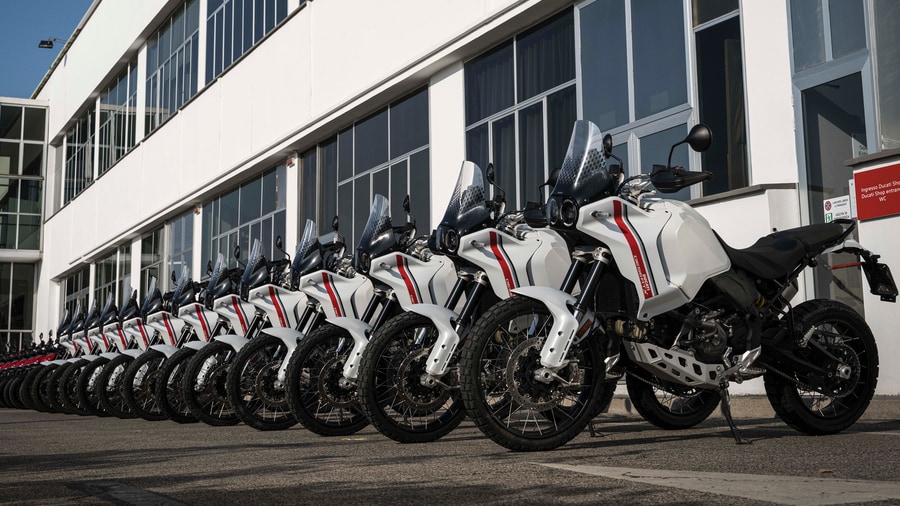
The tank, though large, allows easier movement for the rider compared to the Multistrada, while the slim seat and tank confluence makes it easy to grip onto whether you are riding on or off the road. Small details like a flip-over two-position rear brake lever or the "off-road" marking on the handlebar to know exactly how much to rotate the 'bar to make it ideal for off-road/enduro riding, make the bike feel welcoming in an instant.
Engine, chassis, ride and handling
Ducati let us have a go at it on the road that connects Bologna to Florence - the same mountain tarmac where they do a lot of their road testing. Desert X on the road you ask? Well, the concept showed itself as a focused, rally-inspired off-roading tool, but Ducati decided to make this an adventure bike that is superior off the road compared to the usual big and bulky adventure tourers and at the same time, be an excellent road tourer too.

It is one of the reasons why they dropped the word Scrambler from the name despite the headlights and taillight having a resemblance to Ducati's Scrambler family. It is also the reason why they chose to drop the Scrambler's 800cc engine and went with their popular 937cc L-twin instead from the Multistrada 950/V2. The blokes at Borgo Panigale were quick to design a new trellis frame that would accommodate the liquid-cooled engine without upsetting the geometry planned on the concept.
The Desert X uses a larger rear sprocket - a 49T instead of a 46T from the MS V2 - which gives it shorter first and second gears, which in turn makes for better low-end grunt and connect when riding off the road. While on the highway it feels docile and calm. In fact, it feels more subdued than the Multistrada even and not one bit as manic as the Hypermotard 950 we reviewed recently.
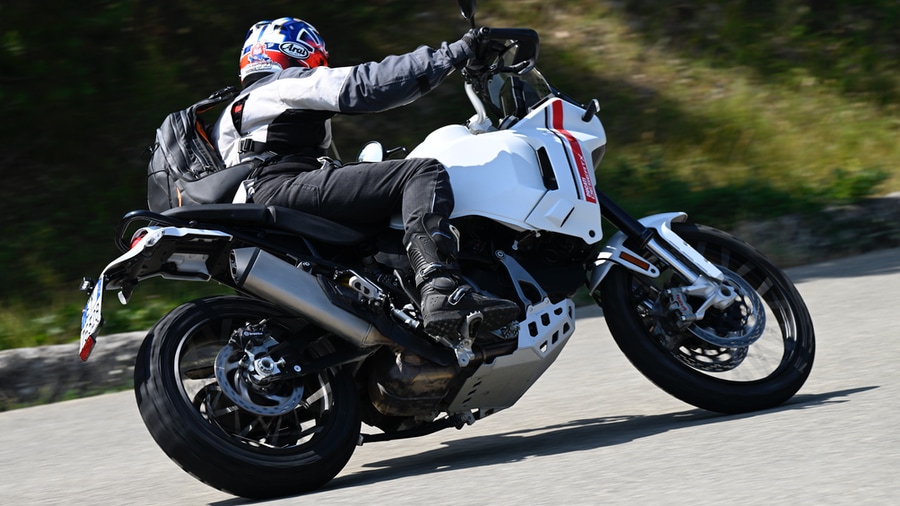
The "calmness" is something that many have started appreciating with Ducatis like the Multistrada V4 (just look at the global sales figures!) and that proves that not every Ducati needs be racy and on the edge. But every touring-friendly Ducati can certainly do with longer service intervals. Unlike the MS V4, the 937cc engine continues to use the Desmo valvetrain which dictates a service interval of 15,000km and valve clearance check every 30,000km and that could be a dampener for some.
Though calm, the engine doesn't feel sluggish. It potters around town quite nicely without the annoying choppiness of some of Ducati's L-twin applications and the linear power delivery impresses further when riding around winding roads or cruising on the highway. Riding around the Raticosa pass, the Desert X was happy tackling all the flowing hill roads in 3rd gear with occasional downshifts only needed around some tight hairpins. There seems to be no powerband as such and the torque on this Testastretta application seems creamy and evenly spread like a Cannoli. It will easily ride into higher triple-digit speeds but the fixed windscreen may not fit riders of all shapes and sizes. A larger screen is available, but the adjustability is missed.
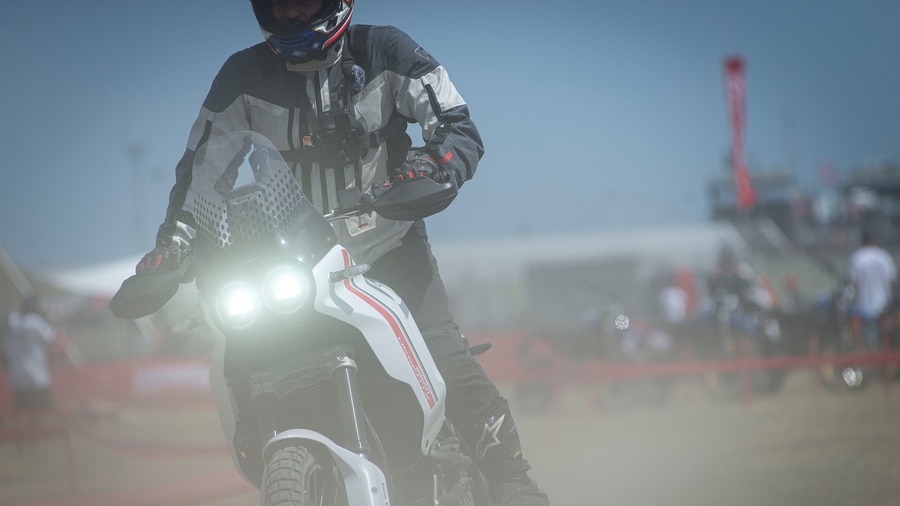
While the Desert X looks like a barebones motorcycle, it comes with the typical suite of Ducati electronics - up/down quick-shifter, cornering ABS, engine brake control, wheelie control and riding and power modes. It is astonishing how well this desert bike can lean into corners with a 21-inch front and skinny dual-purpose tyres (Pirelli Scorpion Rally STR), without ever feeling skittish or the electronics feeling intrusive.
To save weight and cost, semi-active suspension is given the miss. But out of the box, the fully-adjustable suspension works like a charm. Sure, the worst of the Italian roads we rode on weren't even half as bad as the usual roads we would ride on in India, but you will instantly know that the bike is designed to soak in all the bumps and imperfections. With that long suspension travel also comes pronounced nose-dive under braking, so you might often find yourself using the rear brake to stabilise the motorcycle. While the brakes have a predictable bite, the levers have a spongy feel to them to keep the braking neutral off the road as well. To that effect, the Desert X is the only adventure motorcycle I have ridden in recent times that allows ABS to be switched off even on the front brake - provided you are riding in the Enduro or Rally modes.
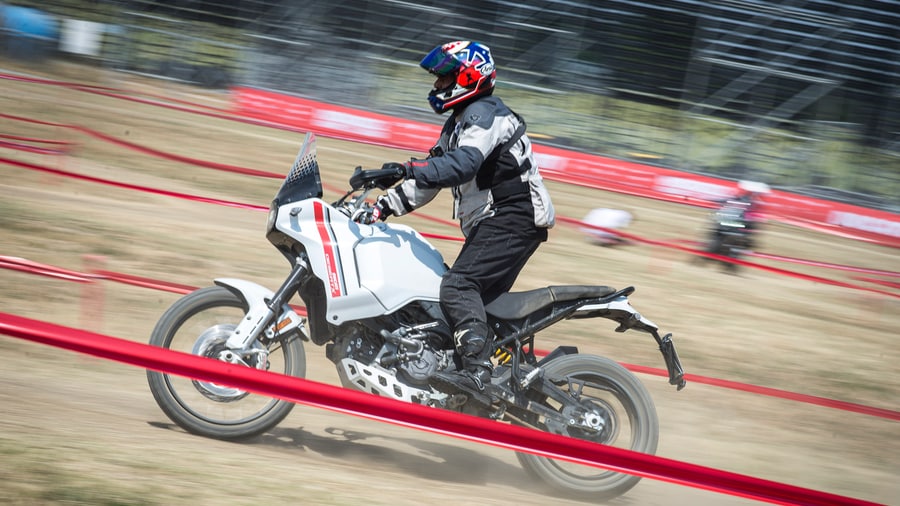
These modes will also change to a rally-style layout on the vertical instrumentation. The Enduro mode restricts peak power to 75PS without compromising on the throttle response, so the fun never dies down unless you are a certain Antoine Meo. If you are, the Rally mode is for you, which goes all out on the power and keeps ABS and traction control at the minimum to ensure at least a basic safety net is in place to keep things in check. It is off the road where you will truly appreciate the weight distribution of the Desert X. It simply doesn't feel like a 220+ kg motorcycle and almost feels like a beefed-up XPulse Rally with plenty of power on tap.
For those who need more go, there are also homologated, competition-spec exhaust and tyre options to choose from. As you would expect, the accessory options also include luggage, riding gear and protection parts, but interestingly there is also an eight-litre auxiliary tank that can be fit on the subframe instead of the panniers. So you may have to compromise on luggage space in lieu of riding range, but it's a good plug-and-play accessory to have for those wanting to go dune bashing. And with the Desert X, you will want to do that often - it is that inviting!
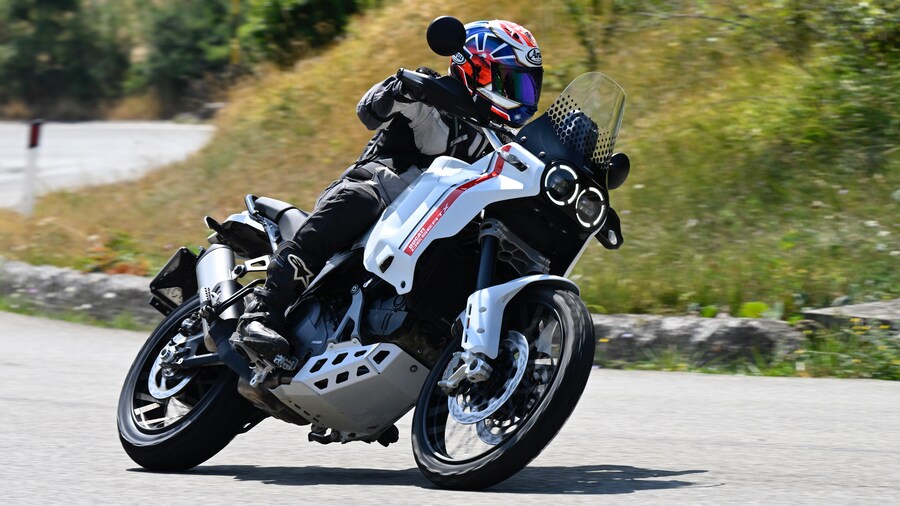
Verdict
The Desert X may come across a garage project and a motorcycle born from Ducati's parts bin. But spend some time with it and you realise that it is just as focussed on its intent as you expect a Ducati to be. It is so good off the road that it's hard to believe that it would be fun on tarmac too - and vice versa. But it delivers on both fronts quite unlike any other motorcycle of its genre, which will be its biggest draw. The Desert X will arrive into India later this year and is likely to be priced a shade under the Multistrada V2 S - and at that price point I'm scared it could get lost as a niche product. Apart from its practical sport-touring sibling, the bigger competition for the X will come from the very accomplished Triumph Tiger 900 Rally Pro and the repositioned BMW F 850 GSA - both of which shouldn't be hard to beat if Ducati can get prospective customers to test ride the Desert X in its element.
Starts Rs 14,65,000
937cc
6-Speed
113.00
96.00
16.94 Kmpl
